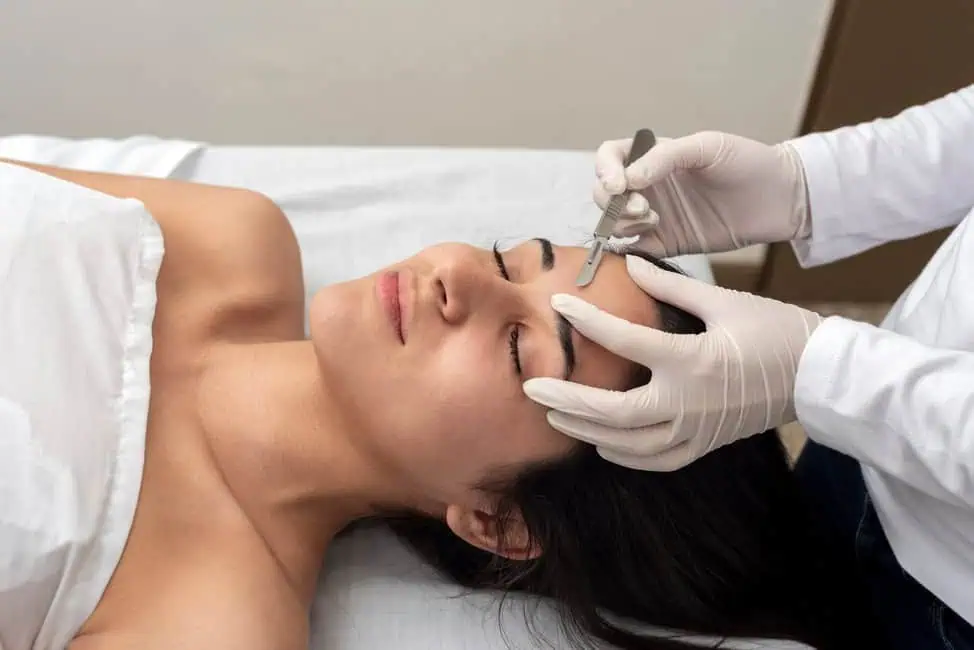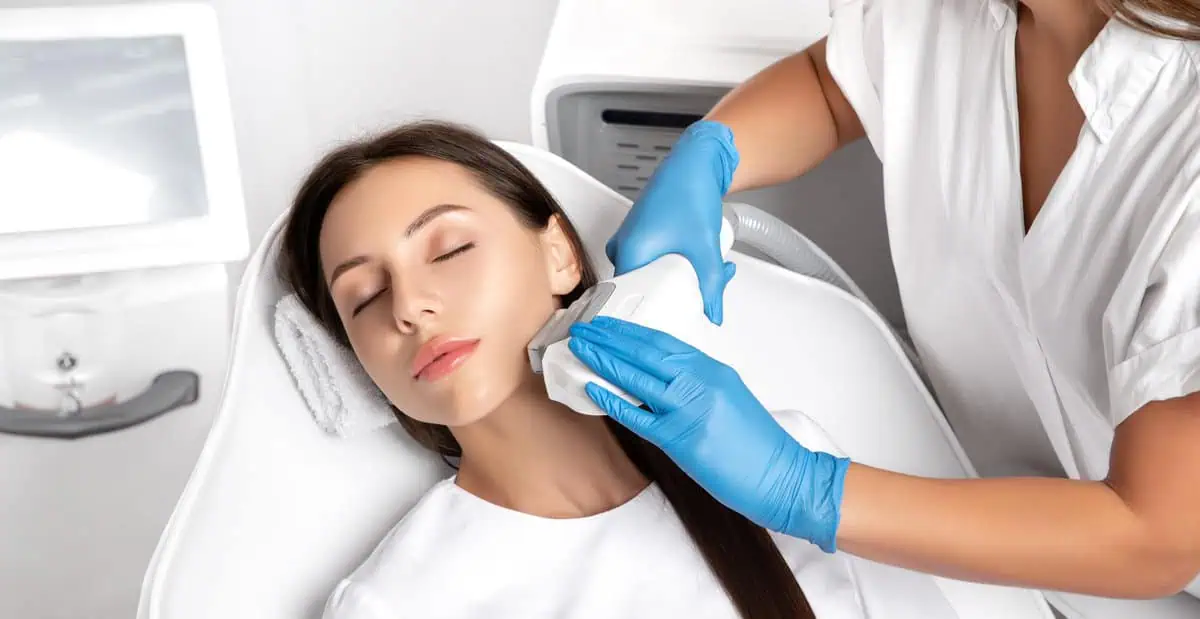Are you considering a cosmetic treatment to revitalize your skin and diminish the appearance of wrinkles and fine lines? With so many options available, navigating the world of aesthetics and understanding the subtle differences between various treatments can be challenging. Regarding youthful, smooth skin, two terms frequently surface: neuromodulators and Botox. But what is the difference between these two, and how are they related?
So we’ll dive deep into neuromodulators and Botox, exploring their functions, applications, and differences. By understanding the relationship between these treatments, you’ll be better equipped to make informed decisions about your skincare journey.
Neuromodulators Overview
Neuromodulators are a class of substances that play a crucial role in the nervous system. They function as chemical messengers, facilitating communication between neurons and influencing various physiological processes. Neuromodulators can be categorized into two main types: neurotransmitters and neuropeptides.
Neurotransmitters, such as acetylcholine and dopamine, are smaller molecules responsible for transmitting nerve signals across synapses, the tiny gaps between neurons. Neuropeptides, on the other hand, are larger molecules that modulate the activity of neurotransmitters, often playing a more complex and diverse role in the nervous system.
In aesthetics, neuromodulators have found a unique application in wrinkle treatments. By targeting specific muscle groups, these substances can reduce muscle contractions, effectively smoothing out wrinkles and fine lines. Neuromodulators achieve this by temporarily blocking the nerve signals that trigger muscle contractions, resulting in a relaxed appearance and youthful skin.
The use of neuromodulators in cosmetic treatments has acquired considerable popularity over the past few decades thanks to their minimally invasive nature and quick, noticeable results. Several neuromodulator products are available, each with distinct characteristics and applications. Among them, Botox is the most well-known and widely used neuromodulator in aesthetics.
Botox: A Popular Neuromodulator
Botox, a brand name for botulinum toxin type A, is a highly popular neuromodulator that has taken the world of aesthetics by storm. Botox originated in the 1970s when scientists discovered its potential therapeutic applications. However, in the early 2000s, Botox gained FDA approval for cosmetic use, specifically for treating frown lines between the eyebrows. Since then, its applications have expanded to include various cosmetic and medical treatments.
The active ingredient in Botox, botulinum toxin type A, is derived from the bacterium Clostridium botulinum. This potent neurotoxin can effectively block nerve signals in small, controlled doses, leading to temporary muscle paralysis. When used in cosmetic treatments, Botox is carefully injected into targeted facial muscles, reducing their contractions and resulting in a smoother, more relaxed appearance.
Botox has become popular for treating wrinkles and fine lines, particularly on the upper face, such as forehead lines, crow’s feet around the eyes, and frown lines between the eyebrows. In addition to its cosmetic uses, Botox has been approved for various medical conditions, including chronic migraines, excessive sweating (hyperhidrosis), and muscle spasms.
One of the reasons for Botox’s widespread popularity is its minimally invasive nature, as it does not require surgery or significant downtime. Typically, Botox treatments show noticeable results within a few days, with the effects lasting around three to six months, depending on the individual and the area treated.
Other Neuromodulators In Aesthetics
While Botox may be the most well-known neuromodulator, it is just one of several options available in the aesthetics market. Each neuromodulator has its unique characteristics and specific applications. Let’s explore some of the other neuromodulators commonly used in cosmetic treatments.
- Dysport: Dysport, another botulinum toxin type A-based product, is often compared to Botox due to its similar mechanism of action. However, there are some key differences between the two. Dysport has a slightly faster onset of action, with results often visible within 2-3 days, as opposed to Botox’s 3-5 days. Additionally, Dysport may diffuse more broadly, making it more suitable for treating larger areas, such as forehead lines. However, this increased diffusion also means it may not be the best option for more targeted treatments.
- Xeomin: Xeomin is another neuromodulator based on botulinum toxin type A. One of its main distinctions from Botox and Dysport is its lack of accessory proteins, which means it is a “purer” form of neurotoxin. This characteristic may reduce the risk of developing resistance to the treatment, making Xeomin an excellent alternative for those who have had previous botulinum toxin treatments. Xeomin is often used to treat frown lines, crow’s feet, and forehead.
- Jeuveau: Jeuveau, also known as “Newton,” is the newest addition to the family of neuromodulators. Like Botox, Dysport, and Xeomin, Jeuveau is derived from botulinum toxin type A. It has been developed explicitly for aesthetic purposes and is FDA-approved for treating moderate to severe frown lines. Jeuveau’s effects and duration are comparable to Botox, making it a viable alternative for those looking to switch things up in their cosmetic treatments.
While Botox remains popular, other neuromodulators like Dysport, Xeomin, and Jeuveau offer unique benefits and characteristics. The availability of multiple options allows individuals to choose the neuromodulator that best suits their specific needs and preferences, ensuring optimal results in their cosmetic journey.
Choosing The Right Neuromodulator
Selecting the right neuromodulator for your cosmetic needs is essential for achieving the desired results. To make an informed decision, consider your preferences, treatment area, and desired outcomes. Additionally, be aware of potential side effects and risks associated with each product.
Consultation with a qualified professional is crucial for choosing the most suitable neuromodulator. A certified provider can assess your specific situation and recommend the best treatment plan. This personalized approach ensures you receive the most effective and safe treatment tailored to your unique requirements.
Takeaway
Ready to rejuvenate your skin and rediscover your youthful glow? Don’t wait any longer! Schedule a consultation with our experienced team at Central Oregon Aesthetics. Our knowledgeable and certified team is dedicated to providing personalized treatments tailored to your unique needs, ensuring you achieve the stunning results you deserve.
Whether you’re new to neuromodulators or a seasoned veteran, Central Oregon Aesthetics is here to guide you every step of the way. Contact us today to book your appointment and embark on a revitalized, radiant skin journey!







